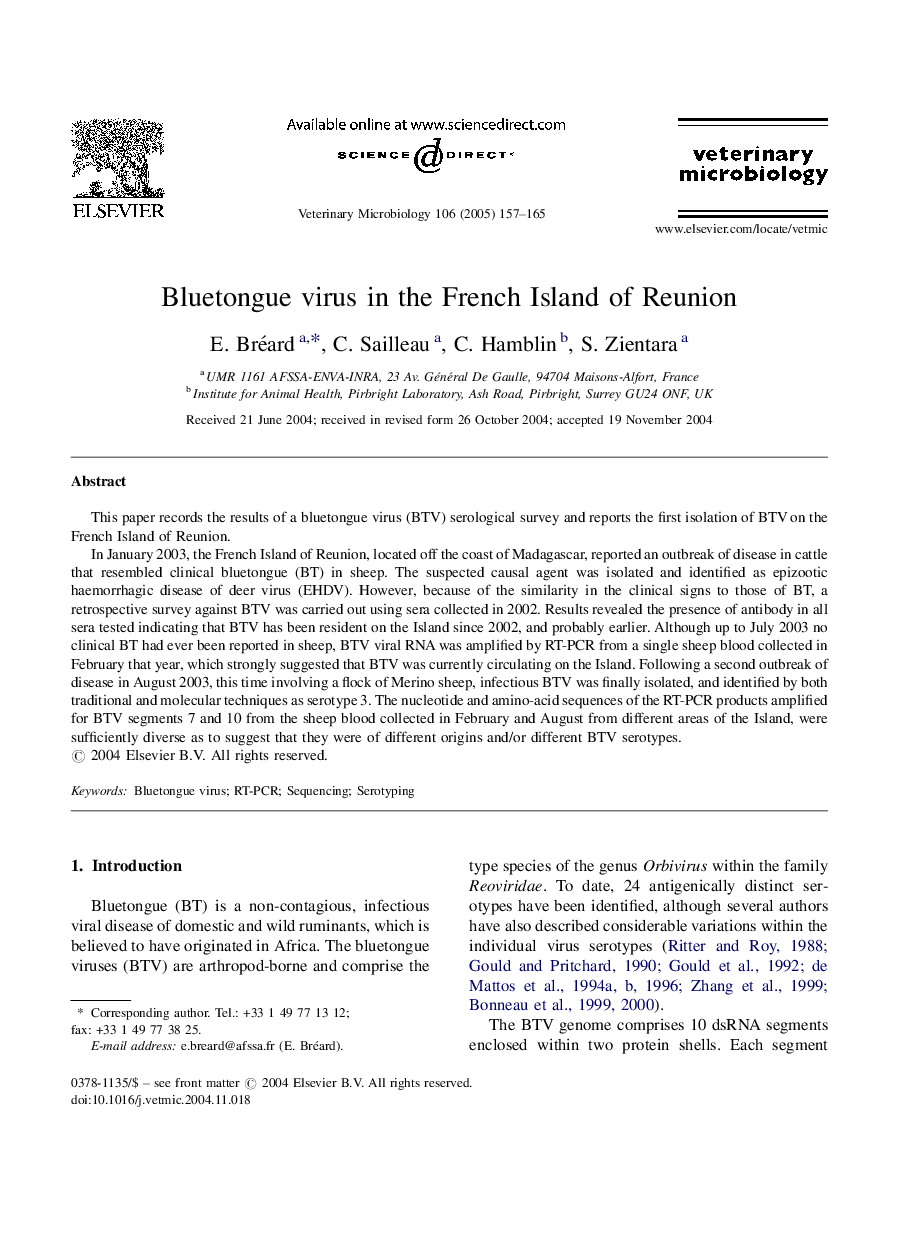| Article ID | Journal | Published Year | Pages | File Type |
|---|---|---|---|---|
| 8989557 | Veterinary Microbiology | 2005 | 9 Pages |
Abstract
In January 2003, the French Island of Reunion, located off the coast of Madagascar, reported an outbreak of disease in cattle that resembled clinical bluetongue (BT) in sheep. The suspected causal agent was isolated and identified as epizootic haemorrhagic disease of deer virus (EHDV). However, because of the similarity in the clinical signs to those of BT, a retrospective survey against BTV was carried out using sera collected in 2002. Results revealed the presence of antibody in all sera tested indicating that BTV has been resident on the Island since 2002, and probably earlier. Although up to July 2003 no clinical BT had ever been reported in sheep, BTV viral RNA was amplified by RT-PCR from a single sheep blood collected in February that year, which strongly suggested that BTV was currently circulating on the Island. Following a second outbreak of disease in August 2003, this time involving a flock of Merino sheep, infectious BTV was finally isolated, and identified by both traditional and molecular techniques as serotype 3. The nucleotide and amino-acid sequences of the RT-PCR products amplified for BTV segments 7 and 10 from the sheep blood collected in February and August from different areas of the Island, were sufficiently diverse as to suggest that they were of different origins and/or different BTV serotypes.
Related Topics
Life Sciences
Agricultural and Biological Sciences
Animal Science and Zoology
Authors
E. Bréard, C. Sailleau, C. Hamblin, S. Zientara,
